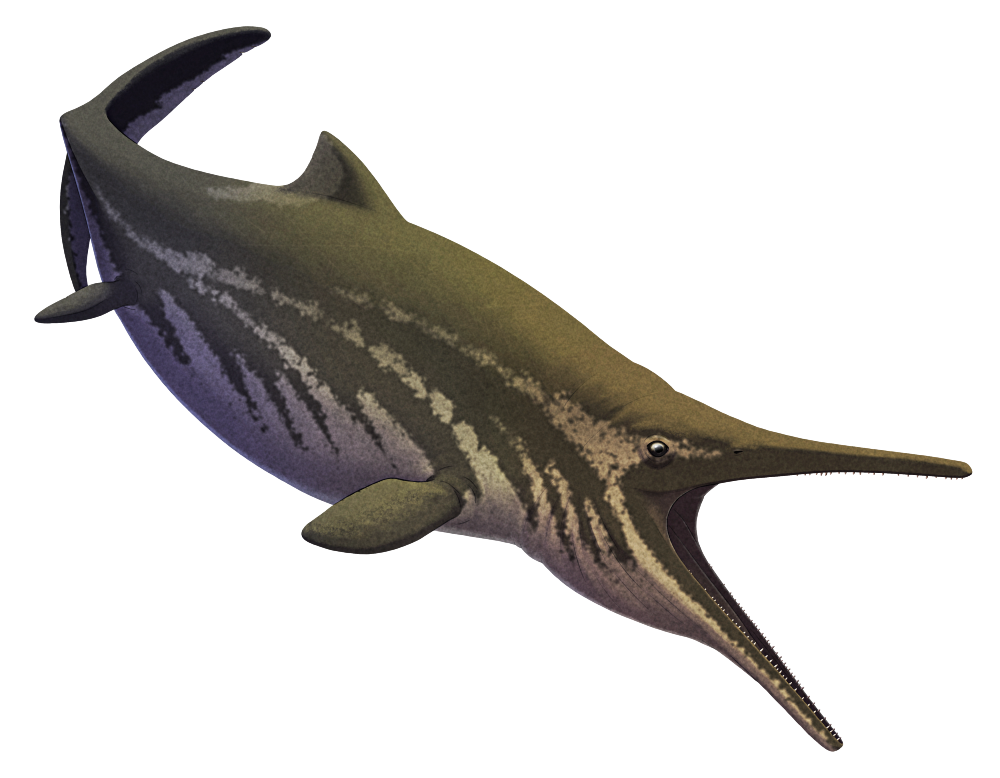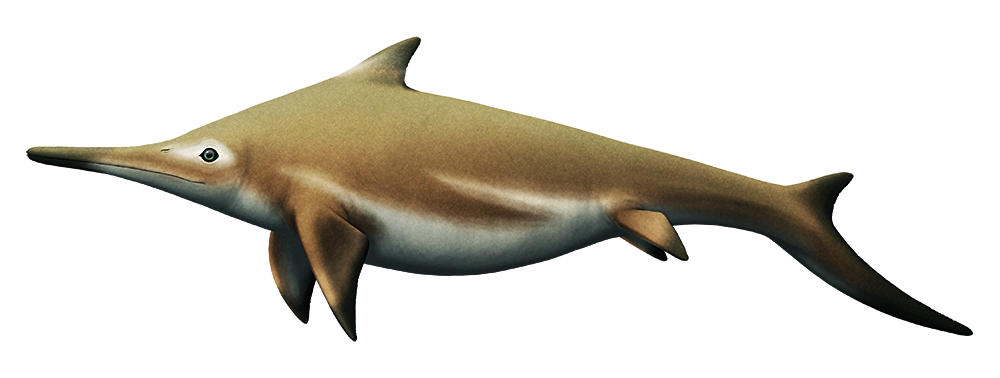The first definite ichthyosaur fossil found in Colombia was a single well-preserved skull, found in Early Cretaceous deposits dating to between 130 and 112 million years ago.
Although first discovered in the 1970s, this marine reptile wasn’t described until the late 1990s, at the time being named as a species of Platypterygius. But since then more pieces of the skeleton have been recovered, and the Platypterygius genus has been found to be a wastebasket taxon in need of revision, so in 2021 the Colombian ichthyosaur got a more detailed redescription and its own distinct name: Kyhytysuka sachicarum.
Kyhytysuka was a mid-sized ichthyosaur, about 5.5m long (18′) – about the size of a small modern orca – with a large head and a long robust snout. Its teeth varied in size, shape, and spacing along its jaws, with several different regions that were specialized to catch, slice, and crush its prey.
It could also open its jaws very widely, possibly up to an angle of 75°, suggesting it was able to tackle particularly large prey such as other marine reptiles. Possible soft tissue preservation around its lower jaw might also be evidence of elastic connective tissue that would have allowed its throat to expand out while swallowing big prey items.
This makes Kyhytysuka the first known example of a Cretaceous-aged ichthyosaur with an apex predator lifestyle, convergently evolving a similar ecological role to some earlier Triassic and Jurassic species.



